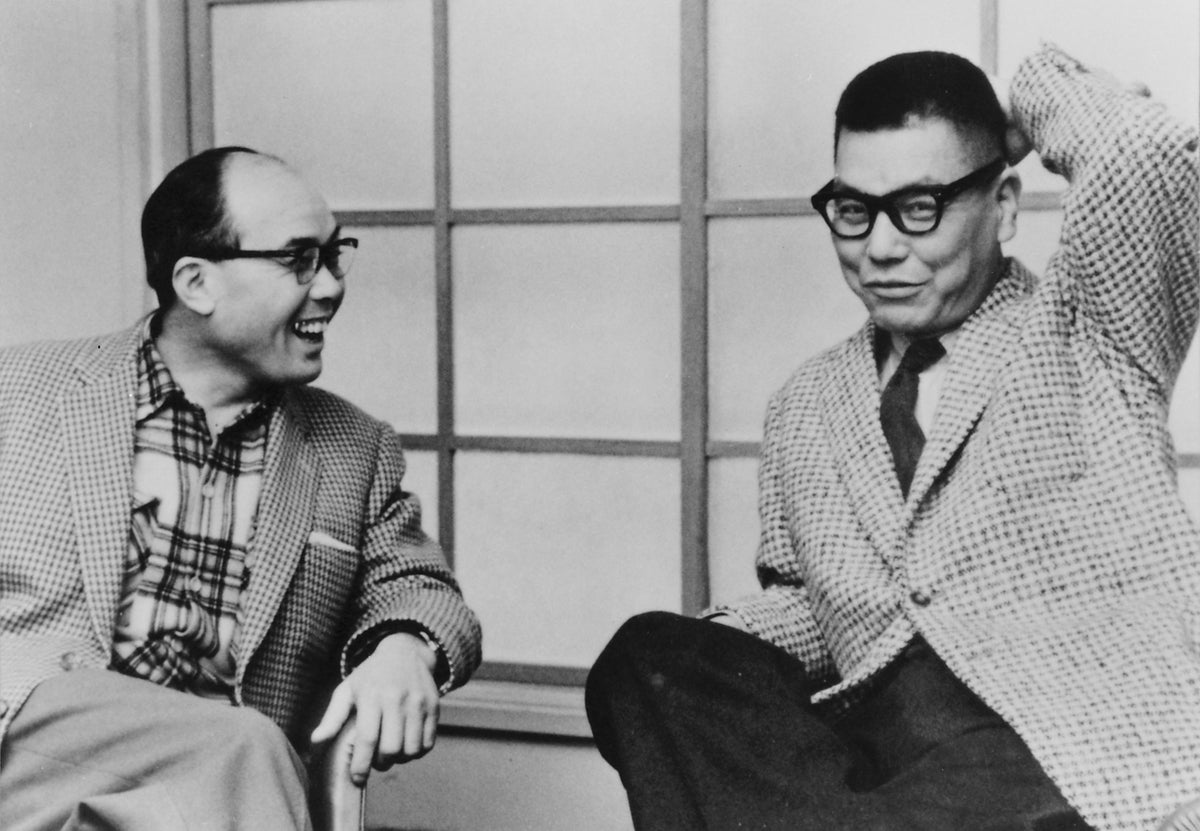
Honda Motor co-founder Takeo Fujisawa will be inducted into the Automotive Hall of Fame at an awards ceremony in Detroit on 20 July. He’ll join the automaker’s founder Soichiro Honda who was inducted in 1989 as the first Japanese automotive executive honoured by the hall of fame located in Dearborn, Michigan.
Born in 1910, Fujisawa originally planned to become a teacher, but instead worked as a salesman for a steel products company and then for a lumber company when he met Soichiro Honda in August 1949, about a year after the founding of Honda Motor, a small local venture in Hamamatsu, Japan. It was right after the launch of the Dream D-Type, considered to be Honda’s first full fledged motorcycle product.
While the two men were equipped with different personalities and skill sets, Honda and Fujisawa hit it off almost immediately and began deep discussions about their approach to business and dreams for the future.
Quickly developing a trusting relationship, they established a shared vision for the future of the company with Fujisawa joining Honda Motor in October 1949. As a president of the company, Honda retained responsibility for product design and technology development and manufacturing operations, inventing many innovative vehicles including Super Cub, the world’s best-selling motorcycle. Fujisawa backed him up as right hand man with responsibility for the business side of the company, including sales, finance and marketing.
Fujisawa’s marketing savvy, strong business sense, and keen ability to chart unique paths to growth proved the perfect match to Soichiro Honda’s engineering acumen and vision for mobility. The partnership lasted 25 years, until March 1973 when both Honda and Fujisawa retired together. Fujisawa had an enormous impact on Honda’s business globally and in the U.S., where he played the key role in launching the brand in the US, initially with motorcycles then small cars such as the S series roadster.
The economical Civic, launched just as the first oil crisis hit, was a smash hit in the US and its later lean burn, CVCC petrol engine could meet strict new California exhaust emission laws without the complex emissions control ‘plumbing’ required to clean up rivals’ older technology engines.

US Tariffs are shifting - will you react or anticipate?
Don’t let policy changes catch you off guard. Stay proactive with real-time data and expert analysis.
By GlobalDataHonda said Fujisawa made several lasting and impactful business decisions that are still relevant today.
Starting Honda Business in the US.
In 1959, and by then the senior managing director of Honda, Fujisawa made the challenging decision to establish American Honda as Honda’s first subsidiary outside Japan. At the time, the entire US motorcycle industry sold no more than 60,000 units annually mostly larger bikes, competing with UK imports such as Triumph and Norton.
One member of the Honda team recommended expansion in Asia, where small motorcycles from Europe, like those made by Honda, were already in use. He suggested that America, the “land of the automobile,” was too difficult a target for Honda. Fujisawa had another idea. “On second thought, let’s do America,” he said.
“To succeed in the US is to succeed worldwide. To take up the challenge of the American market may be the most difficult thing to do, but it’s a critical step in expanding the export of our products.” Without Fujisawa’s leadership, Honda would not be the success story in the US it has become.
US motorcycle manufacturing began in Marysville, Ohio after Fujisawa’s retirement in 1979 with the Gold Wing tourer and car production started in an additional plant in 1982 with the Accord. Later, a Canadian plant was established in Alliston, Ontario.
Creating independent dealer network
Fujisawa adopted many innovative sales and marketing strategies in Japan and the US. This included the decision to start motorcycle sales by establishing Honda’s own dealer network. Despite suggestions that Honda should follow the approach of other Japanese companies and rely on a trading company to launch US sales, Honda forged relationships with many smaller dealers, even those with no history in the motorcycle industry, and successfully expanded business from the west coast (it was based in Torrance near Los Angeles) across America. By the mid-1960s, Honda was the best selling motorcycle brand in America.
Establishing Separate R&D Company
In 1960, based on Fujisawa’s initiative, Honda R&D was created as a separate company. Fujisawa conceived the idea with two objectives: to give engineers the freedom to create new value without being constrained by the ups and downs of daily business and to protect ability to sustain this innovation in the future when they could no longer rely on the genius of Soichiro Honda.
The new R&D company ushered in an era of technological and product innovation, and entering new business areas including the automobile and aviation industries.



